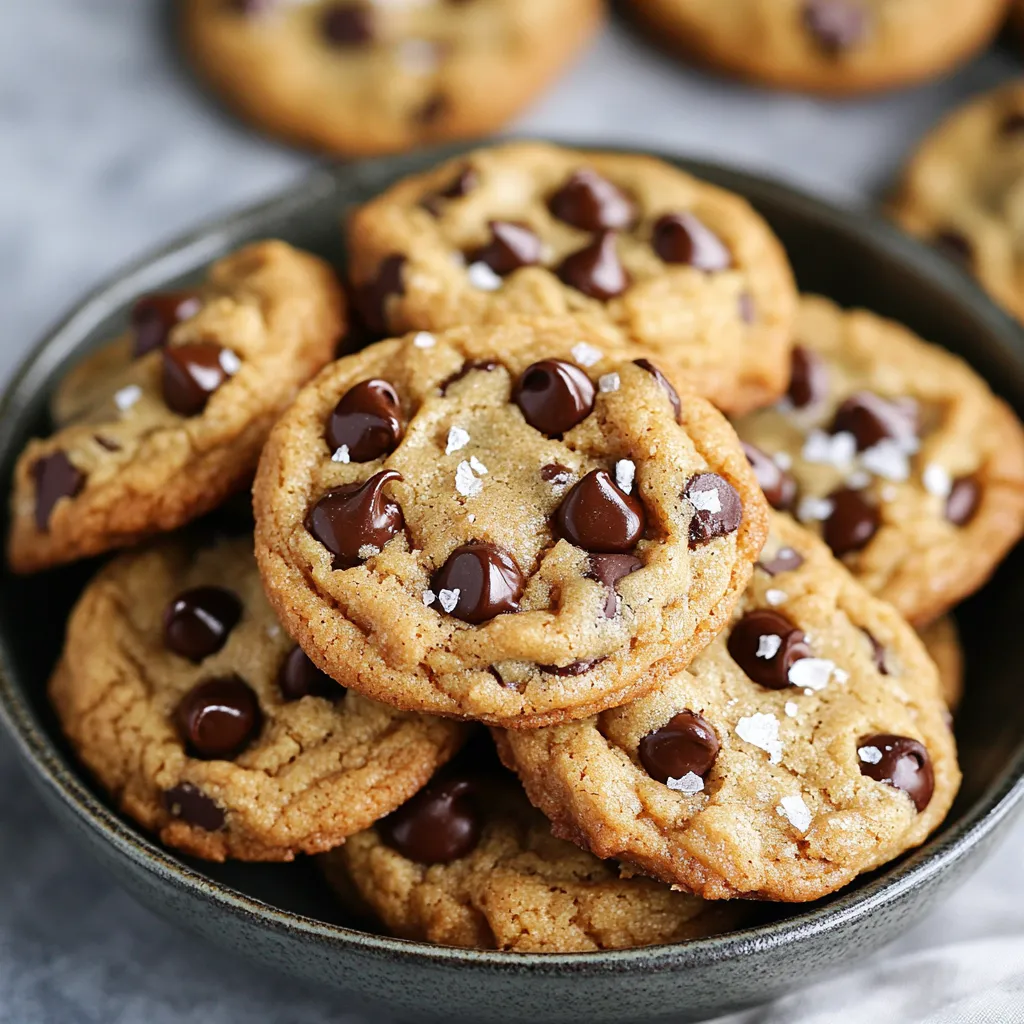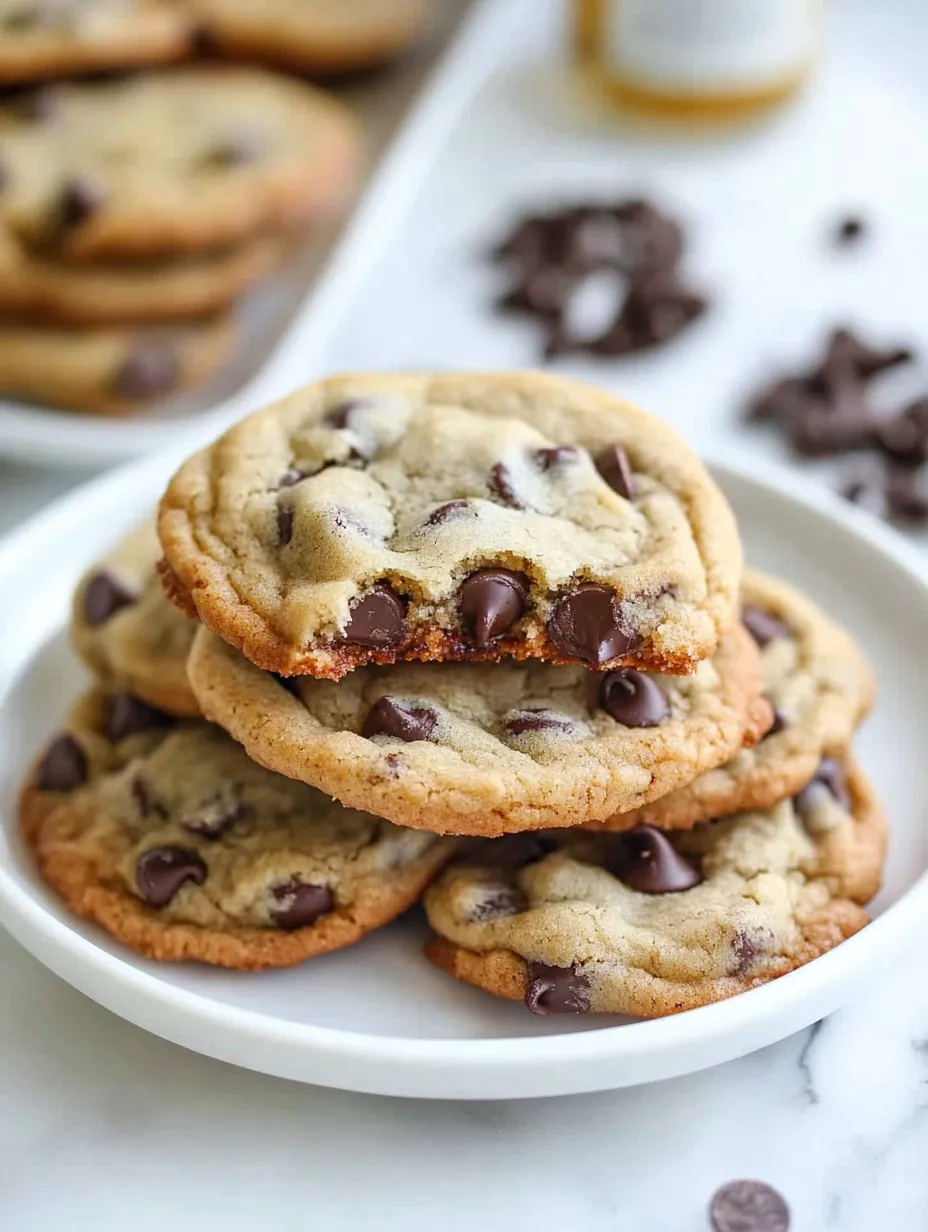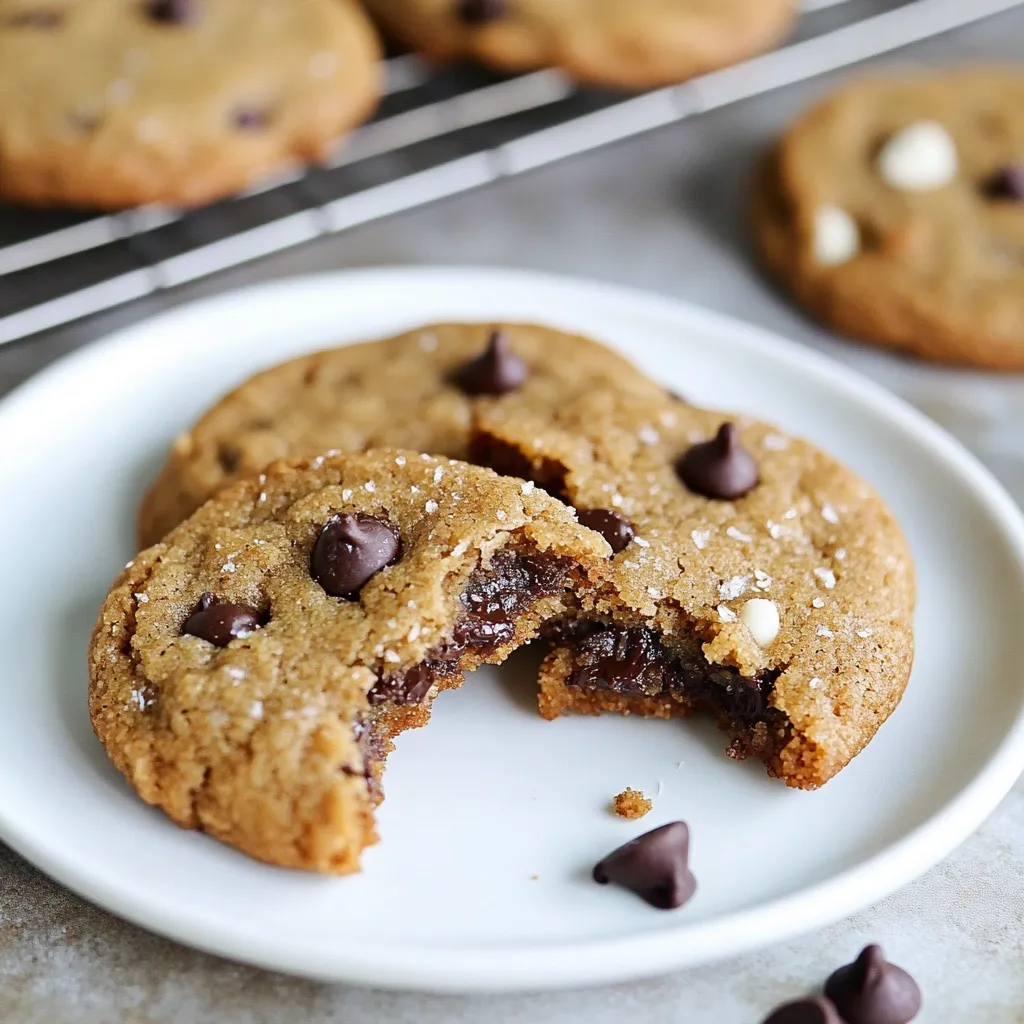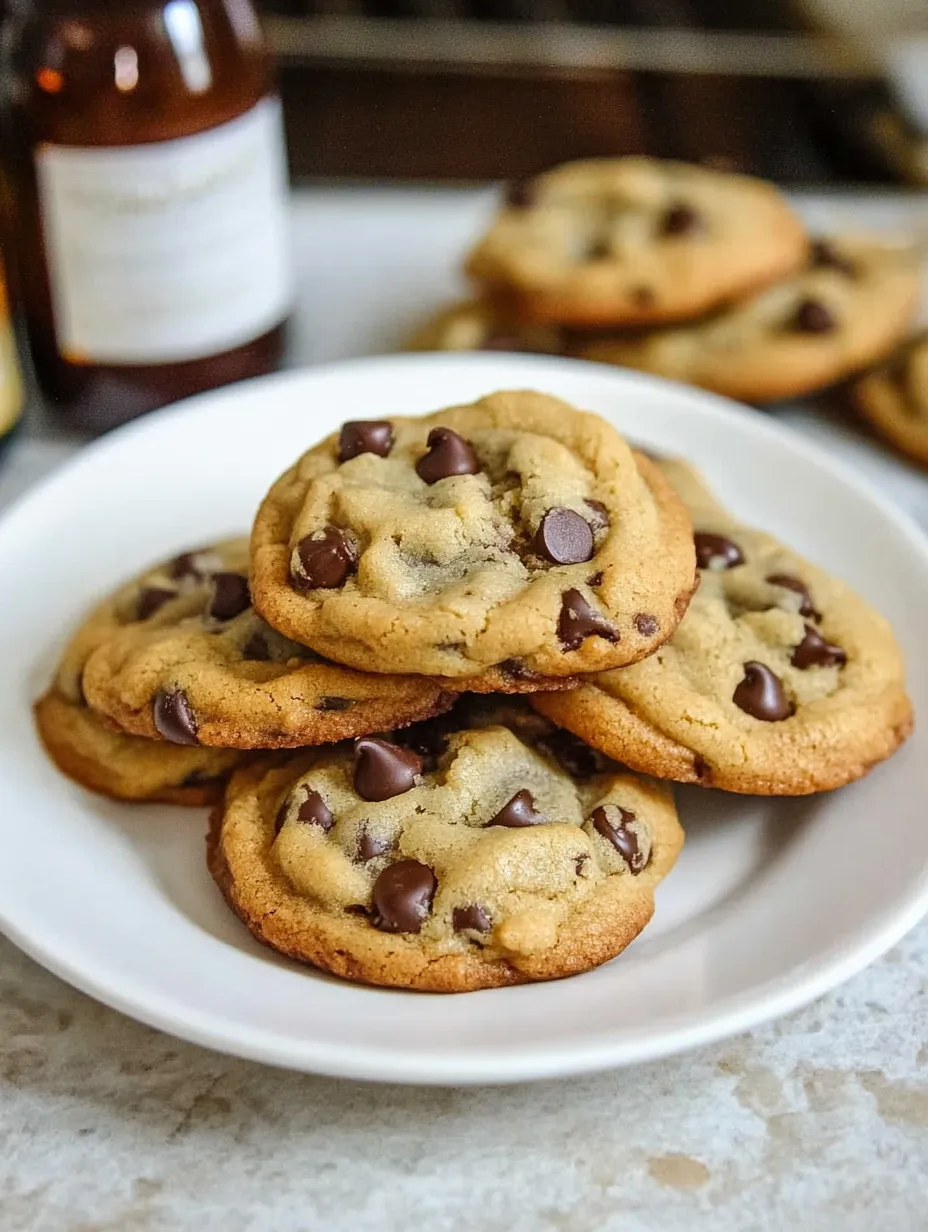 Pin it
Pin it
These Plant-Based Coconut Oil Choc Chip Cookies show you don't need dairy to make super chewy, melty cookies everyone will want seconds of. The coconut oil brings a light richness and creates that perfect mix of crunchy edges with a soft middle that makes you grab another cookie right away.
When I first whipped these up, my doubtful kids couldn't tell they were completely plant-based. These days they ask for "those cookies with coconut oil" whenever we feel like baking something tasty. The way the chocolate stays all gooey while the edges turn golden makes these treats absolutely magical.
Key Ingredients Breakdown
- Coconut Oil: Go for unrefined if you want a hint of coconut taste or refined for no flavor - it should feel like soft butter when you touch it
- Brown Sugar: Either light or dark works fine, though dark gives more caramel undertones
- Plant Milk: Oat milk creates the nicest texture, but any non-dairy option does the job
- Flour: Standard all-purpose flour gives you that wonderful chewiness
- Plant-Based Chocolate Chips: The Enjoy Life brand gets super melty and keeps its shine
 Pin it
Pin it
Step-by-Step Guide
- Getting Your Mix Just Right
- Your coconut oil needs to be squishy not runny
- Beat sugar and oil until completely combined
- Pour milk in slowly so everything stays together
- Mix flour in carefully to keep cookies tender
- Making Them Feel Perfect
- Stop mixing once the flour disappears
- Squeeze dough together if it falls apart
- Gently add your chocolate chips
- Form tall dough balls for chunky cookies
- Oven Tricks
- Keep an eye out for golden edges
- Pull them out while centers look a bit raw
- Wait on the pan so they firm up right
- Move them carefully while they're warm
 Pin it
Pin it
Each time I bake these goodies, my kitchen fills with the sweet smell of vanilla and melty chocolate, bringing back fond cookie memories while creating new ones without animal products.
Shaping Beautiful Cookies
I've learned that lightly pushing down the cookie dough balls helps them spread just right. Sometimes I stick extra chocolate chips on top before they go in the oven to make them look like they're from a fancy bakery.
Heat Changes Everything
Coconut oil gets really different as temps change. In a warm kitchen, you might want to cool the dough briefly. If your place is chilly, let the dough warm up a bit so you can scoop it easier.
After making tons of these cookies, they've become my favorite way to show that plant-based treats can taste just as amazing as traditional ones. They work great for school fundraisers, kids' snacks, or anytime you want a solid cookie recipe that happens to skip animal products.
Smart Timing Tricks
While you don't have to chill this dough, I've found letting it sit for about 10 minutes after mixing helps the flour soak up moisture better, making the texture even nicer. If your kitchen feels really warm, just pop the dough in the fridge for 5 minutes to make it easier to handle.
How Oil Makes Different Cookies
Unlike butter cookies, these coconut oil ones firm up differently as they cool. The oil hardens faster than butter would, which is why they need that important 5-minute rest on the hot cookie sheet. This waiting step makes sure you get that awesome chewy bite we're going for.
Fun Mix-In Ideas
I'm always amazed at how flexible this basic recipe is. Some yummy twists I've tried include:
- Adding smashed freeze-dried raspberries for fruit flavor pops
- Mixing in crunchy pecans and coconut shreds for island vibes
- Dropping in swirls of almond butter for extra yumminess
- Dusting with cinnamon and cardamom for a tea-spiced treat
 Pin it
Pin it
Fixing Common Problems
If your cookies go too flat, your coconut oil was probably too warm. If they stay like balls, try flattening them a little before baking. What's great about this recipe is how forgiving it is - even weird-shaped cookies taste awesome!
Keeping Them Fresh Longer
These cookies actually stay nice longer than regular butter cookies do. Keep them in a sealed container with a bread slice to keep that perfect chewiness for up to a week.
Working to get these plant-based coconut oil cookies just right taught me that limits often lead to the tastiest new ideas. The way coconut oil makes those crispy edges while keeping the middle all chewy shows that plant-based baking can make treats everyone loves, no matter what foods they usually eat.
Just remember, succeeding with these cookies means understanding how coconut oil acts when it's warmer or cooler. Once you get that down, you'll have a reliable plant-based cookie recipe you'll make again and again. Enjoy your baking! 🌱🍪
I've noticed these cookies work really well when introducing folks to plant-based sweets. They look and feel like regular cookies, making them an easy first try at dairy-free desserts, and they taste so good people will keep asking for them. Whether you eat fully plant-based, want less dairy, or just like trying different baking methods, these cookies prove tasty treats don't care about diet rules.
Frequently Asked Questions
- → What’s the best kind of coconut oil to use?
- Both refined (no coconut flavor) and unrefined (mild coconut taste) work great. Just keep it soft and not liquefied.
- → How should I store them?
- Keep them in an airtight container at room temperature for up to 3 days, or freeze them for a month.
- → Do I need to cool the dough first?
- No cooling is needed. The dough is ready to bake right after mixing.
- → Which non-dairy milk works best?
- Almond, soy, oat, or coconut milk all work equally well—whatever you have on hand!
- → Can these cookies be considered vegan?
- Absolutely! Just make sure to use dairy-free chocolate chips.
